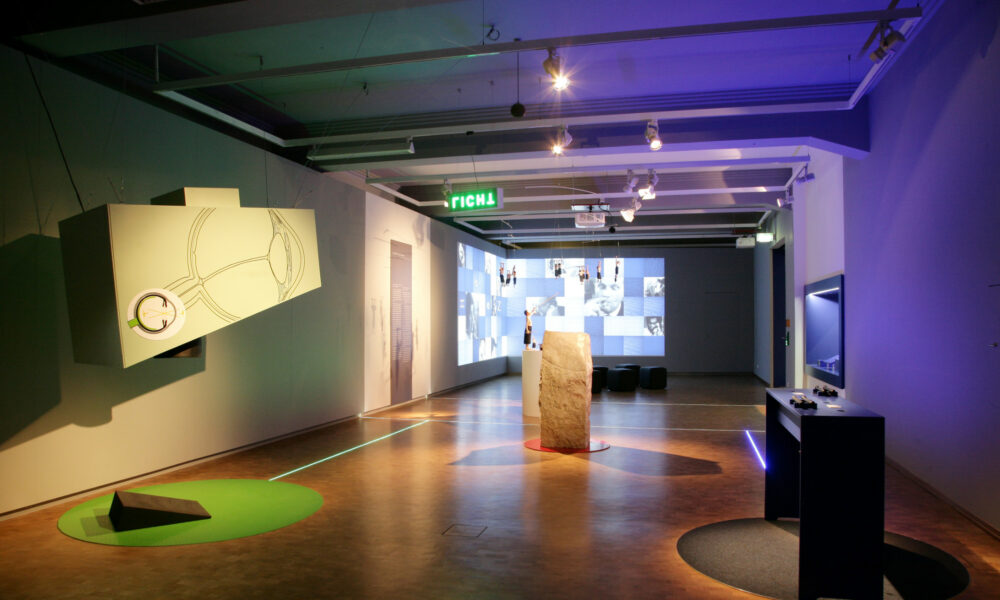
Sounds, Images, Writing and the Internet
Welcome to our permanent exhibition!
Communication shapes our everyday life – and it does so in a variety of ways. That is why our permanent exhibition begins with a collage juxtaposing historical film clips, logos, images, letters and characters, and acoustic signals. It will get you ready for your tour through our exhibition rooms, each one dedicated to communication-based on sounds, images, writing or digital means, respectively.
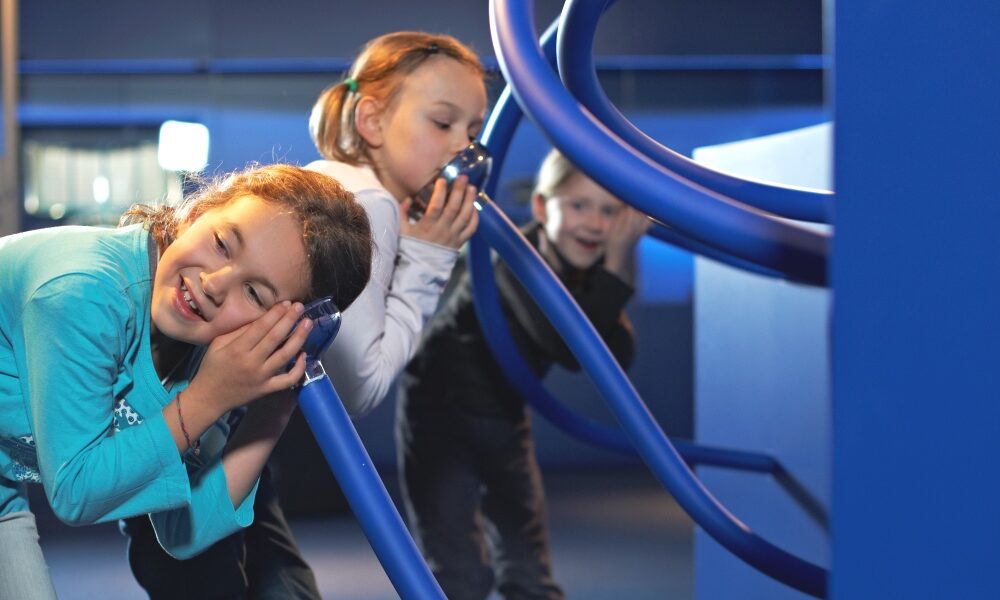
Sounds
A room for the ears
Don’t be afraid! It is relatively dark in the room dedicated to sounds since your ears are the focus here. You will first hear sounds, tones, and noises – from the call of a postal horn to the ring of a telephone. The room also contains many objects to explore, things like a log drum or an answering machine. All of the objects produce or transmit acoustic messages. Human speech is an important topic. Have you ever thought about how you learned to talk? At our media stations, you can call up information about the learning process or find out how we use language to shape our personal and social relationships. Check out the room’s architecture: it forms a half-circle to imitate the sound waves that fill the space.
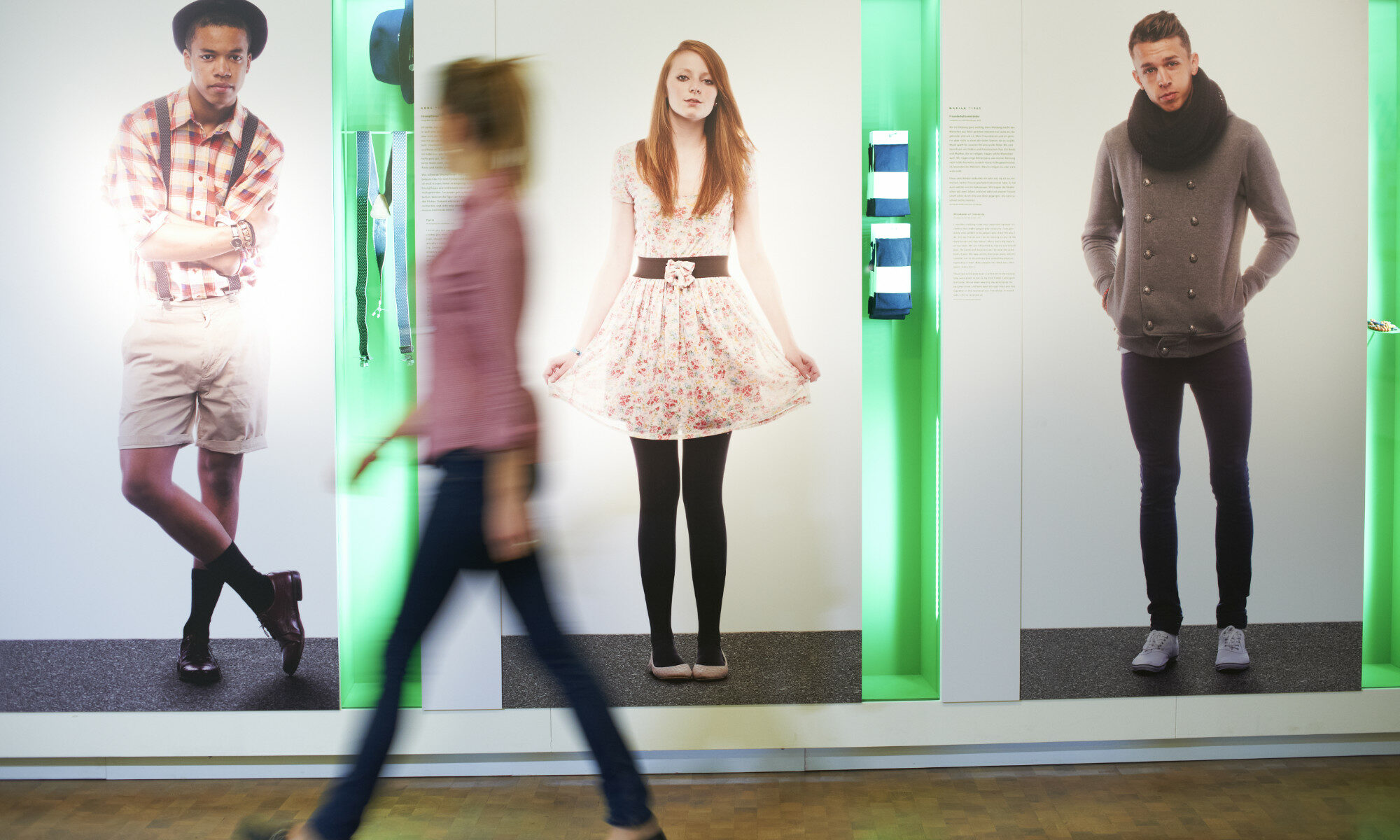
Images
A room for the eyes
Now you’ll need your eyes, as you are entering the bright, lightroom of images. After welcoming you, an actress will show you how many moods a face can express. Our body is a communicative all-around talent. We present ourselves through facial expressions, gestures, and even clothing. We absorb information about other people with our eyes and decode it. Visual signals are also disseminated via emblems, (traffic) signs, photographs, and television. Before going on to the next room, try out the logo game. You will be amazed at how many brands you recognize – even when you only see details.
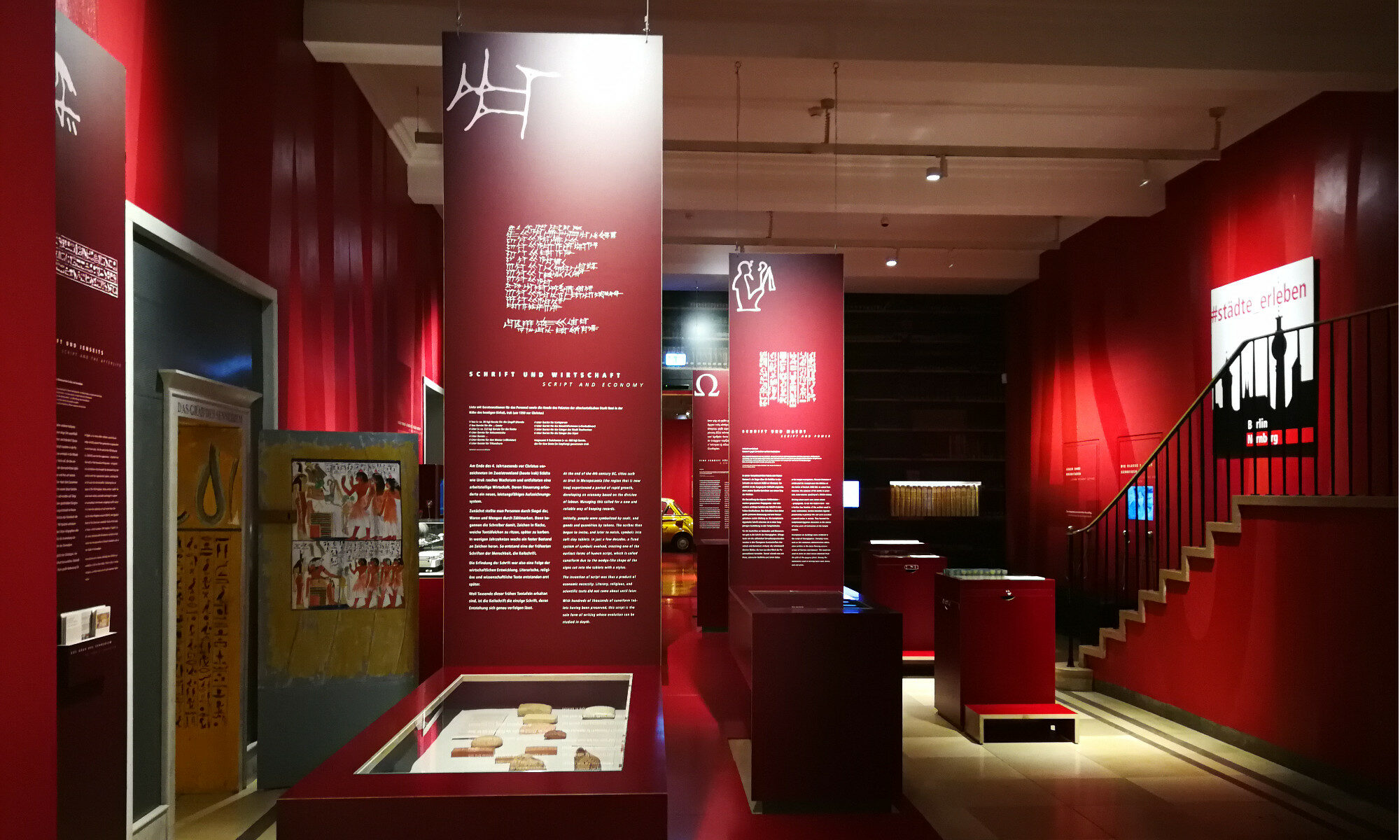
Writing
A room for messages
How many characters or letters have you read today? Surely hundreds of them. Texts, whether written by hand or typed on a keyboard and information on signs and screens are our companions in everyday life. In a red space that is elongated like the ascender of the letter “h,” we show you how and why humans developed alphabets and the functions that written material has for trade, rituals of all types, and social order. Watch children as they learn to write and learn how difficult everyday life is for people who cannot read and write, and find out what they dream about.
A special highlight from the Valley of the Kings: the reproduction of the burial chamber of Sennedjem, an artisan from ancient Egypt. Hieroglyphics and illustrations are combined in splendid symbiosis here to show viewers the relationship between ritual and writing. With that in mind, experience yourself how difficult it is to put messages on paper using a quill pen and dip pen in our Writing Workshop.
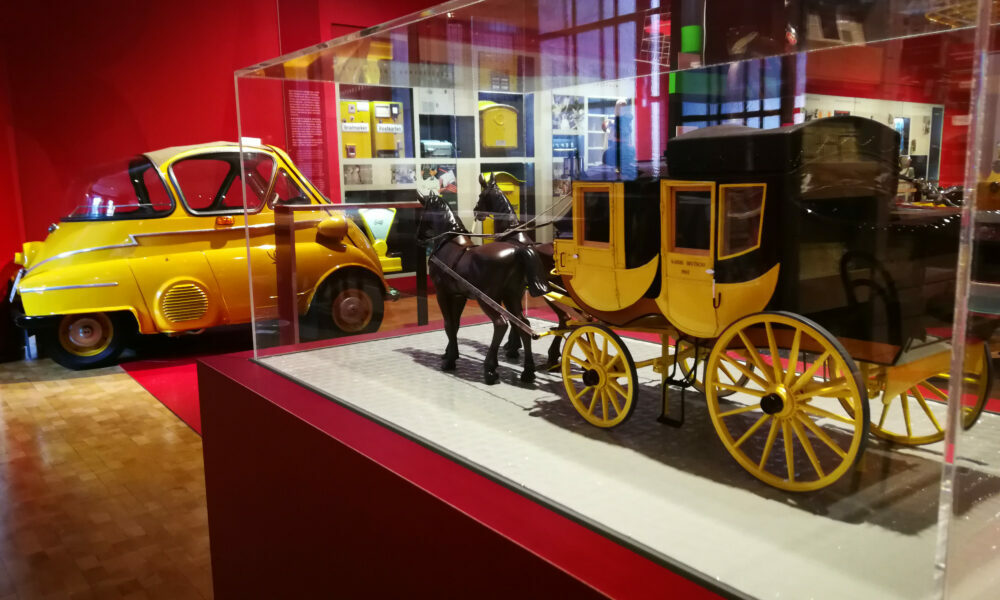
Interconnection
But how did the messages reach their recipients? And what about the entire shipments and packages that you order today and receive tomorrow? Of course, we are happy to take advantage of this promise from logistics service providers. And actually, it isn’t new: “fast and faster” has always been important when transporting packages and people. That is why since the fifteenth century, the postal service has focused on well-organized networks of routes that overcome even long distances with as few interruptions as possible. It originally used stagecoaches to carry out its mission, and later added trains and special-purpose vehicles. When you try out our pneumatic dispatch system, you will be playing with another kind of network that sends small messages to their destination.
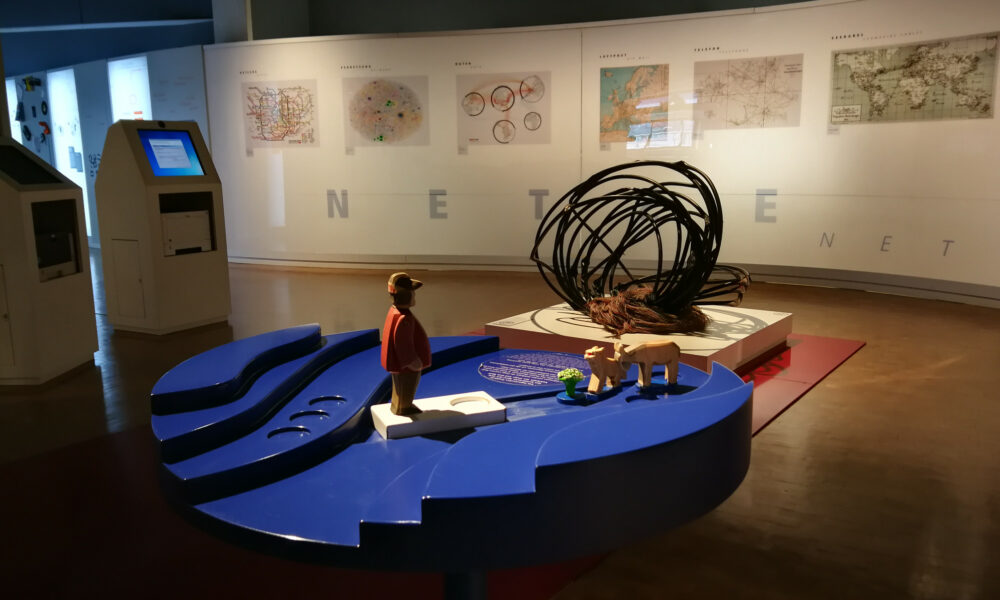
Networked Worlds
A room for all the senses
How often have you held your smartphone in your hand since entering the museum? Perhaps you have used it to take photos, send a text message or have a brief conversation. For 25 years, the small digital all-rounder has made it possible to communicate constantly and in real-time through sounds, images, and writing. It has made many familiar, everyday companions such as the atlas, camera, and radio expendable. The opportunities and options resulting from the digitalization of everyday life are the subjects of Networked Worlds, our last room. In the gallery of historical milestones, you can see how computers entered our everyday lives: when the Commodore 64 was launched and how long iPhones have been in the market, for example. In the networked world, services, information, and contacts are available without limits and we are all users and designers at the same time. Media skills are in demand here: we invite you to take a test and then find out how you can better deal with your digital everyday world.














